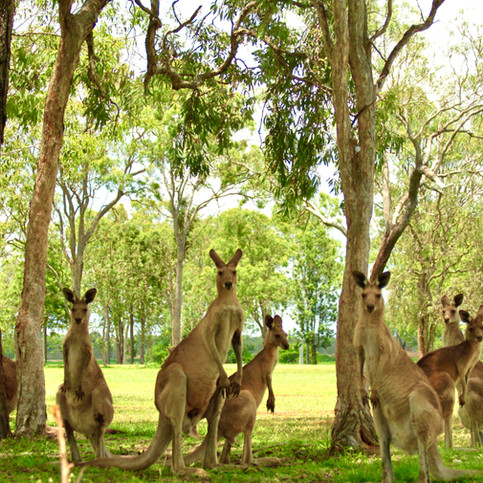Climate change in Australia affects the air we breathe, the food we eat and the water we drink. As global temperatures rise, so do sea levels. This makes it harder for coastal communities to protect themselves from storms and flooding. Warmer temperatures also lead to more evaporation, which can lead to drought conditions inland.
Climate Change in Australia
Given its location, climate change presents a number of challenges for Australia. Major climate issues facing the country include more extreme weather events, sea level rises and coral bleaching, with climate change considered a significant threat to Australia. The situation is likely to get worse if action is not taken to reduce greenhouse gas emissions.
Climate Change and Health
Climate change can also have a direct impact on human health, both physically and mentally. Rising temperatures can lead to more heat-related illnesses such as heat stroke, while changes in weather patterns can impact the spread of disease-carrying mosquitoes. Extreme weather events can also cause physical injuries and mental health problems.
Australia’s Carbon Footprint
Australia is one of the world’s largest per capita emitters of greenhouse gases, with the country’s carbon footprint currently about 5.4 tonnes per person. This is due largely to the country’s reliance on coal-fired power stations for electricity.
Wildlife in Australia
Australia is home to a diverse range of wildlife, including many unique species found nowhere else in the world. Unfortunately, climate change is already having an impact on many of these species. As temperatures rise and weather patterns change, animals are being forced to adapt to new conditions. Some species are struggling to survive, while others are at risk of becoming extinct.
Koalas
The koala is one of Australia’s most iconic animals, but it is also one of the most threatened. Koalas are particularly vulnerable to climate change because they are very sensitive to temperature extremes. As temperatures rise, koalas are at risk of suffering from heat stress, which can lead to death. In addition, changes in weather patterns are affecting the availability of food and water for koalas. This is likely to become a major problem as the effects of climate change intensify.
Kangaroos
Kangaroos are another species that is feeling the impacts of climate change. As temperatures rise, kangaroos are at risk of suffering from heat stress and dehydration. In addition, changes in weather patterns are affecting the availability of food and water for kangaroos. This is likely to become a major problem as the effects of climate change intensify.

Great Barrier Reef
The Great Barrier Reef is one of the world’s most important natural sites and a major tourist destination. Unfortunately, it is also under threat from climate change in Australia. Rising sea temperatures are causing coral bleaching, which is a process whereby corals turn white and eventually die. This is a major problem for the Great Barrier Reef, as it threatens the survival of the many species that rely on the reef for food and shelter.
In 2016, over two-thirds of the Great Barrier Reef was affected by coral bleaching. Again in 2022, the reef was hit by another mass bleaching event. Scientists are concerned that the Great Barrier Reef could soon be lost entirely if action is not taken to reduce greenhouse gas emissions and limit the impacts of climate change.
Ningaloo Reef
Ningaloo Reef is another iconic site that is under threat from climate change in Australia. It is the world’s largest fringing coral reef, and like the Great Barrier Reef, it is suffering from coral bleaching due to rising sea temperatures. In addition, changes in weather patterns are causing more cyclones and storms to form in the region, which can damage or destroy parts of the reef.
Climate Change in Sydney
The affects are climate change are being felt in Sydney. Some of the major issues facing the city include:
Heatwaves: As the planet warms, heatwaves are becoming more frequent and intense. Sydney experienced a record-breaking heatwave in February 2017, with temperatures reaching 47 degrees Celsius.

Storms and Flooding: Due to rising sea levels and more extreme weather conditions, storms and flooding are becoming more common in Sydney. Several major Australian cities were victims of a severe storm in October 2016, causing widespread damage and major floods in 2011 and 2016.
Bushfires: Warmer, drier conditions have led to an increase in bushfire activity across Australia. Sydney is no exception, with several large bushfires affecting the city in recent years.
Climate Change in Brisbane
Brisbane is also feeling the effects of climate change. Major issues facing the city include:
Heatwaves: Brisbane experienced a record-breaking heatwave in February 2017, with temperatures reaching 45 degrees Celsius.
Storms and Flooding: Due to rising sea levels and more extreme weather conditions, storms and flooding are becoming more common in Brisbane.
Bushfires: Warmer, drier conditions have led to an increase in bushfire activity across Australia. Brisbane is no exception, with several large bushfires affecting the city in recent years.
Climate Change in Melbourne
Like Sydney, Melbourne is also feeling the effects of climate change. Major issues facing the city include:
Heatwaves: Melbourne experienced a record-breaking heatwave in February 2017, with temperatures reaching 46 degrees Celsius.
Storms and Flooding: Due to rising sea levels and more extreme weather conditions, storms and flooding are becoming more common in Melbourne.

Bushfires: Warmer, drier conditions have led to an increase in bushfire activity across Australia. Melbourne is no exception, with several large bushfires affecting the city in recent years.
Government Initiatives
A number of initiatives to mitigate the effects of climate change in Australia are underway nationwide. The Australian government has committed to reducing greenhouse gas emissions by 26-28% below 2005 levels by 2030 by increasing the use of renewable energy, energy efficiency programs and carbon pricing. Carbon offsets are also playing a role in achieving the target.
Offsetting Carbon Emissions
Carbon credits offer an effective way for businesses and individuals to reduce their impact on the environment. Carbon credits are a traded commodity that represent a unit of carbon dioxide emissions reductions. One carbon credit is equivalent to one tonne of carbon dioxide.
Carbon offsetting programs involve activities that help to reduce greenhouse gas emissions or sequester carbon in trees and soil. These activities can include planting trees, investing in renewable energy or switching from coal-fired power stations to cleaner energy sources.When you buy carbon credits, you are effectively paying to have these activities carried out on your behalf. The cost of carbon credits varies depending on the type of project and the location.
Types of Carbon Credits
There are two main types of carbon credits: voluntary and compliance. Businesses and individuals purchase Voluntary carbon credits to offset their emissions. In contract to the voluntary market, Compliance carbon credits are required by law in some juristdictions.
Australia has a number of carbon offsetting programs allowing businesses and individuals to participate in the fight against climate change in Australia. These include the Emissions Reduction Fund, the Safeguard Mechanism and the Carbon Farming Initiative.
Emissions Reduction Fund
The Emissions Reduction Fund is the Australian government’s main climate change mitigation initiative. It provides financial incentives for businesses to reduce their emissions through a series of reverse auctions and reverse affects of climate change in Australia.
Safeguard Mechanism
The Safeguard Mechanism is designed to limit emissions from large emitters, such as power stations and factories. The mechanism requires these facilities to surrender emission units if they exceed their baseline emissions level.
Carbon Farming Initiative
The Carbon Farming Initiative is a voluntary offsetting program that allows businesses and individuals to earn carbon credits by undertaking activities that reduce emissions or store carbon. These activities can include planting trees, investing in renewable energy or switching from coal-fired power stations to cleaner energy sources.
Participating in an offsetting program is a way for businesses and individuals to reduce their impact on the environment and help Australia meet its emissions reduction targets.

